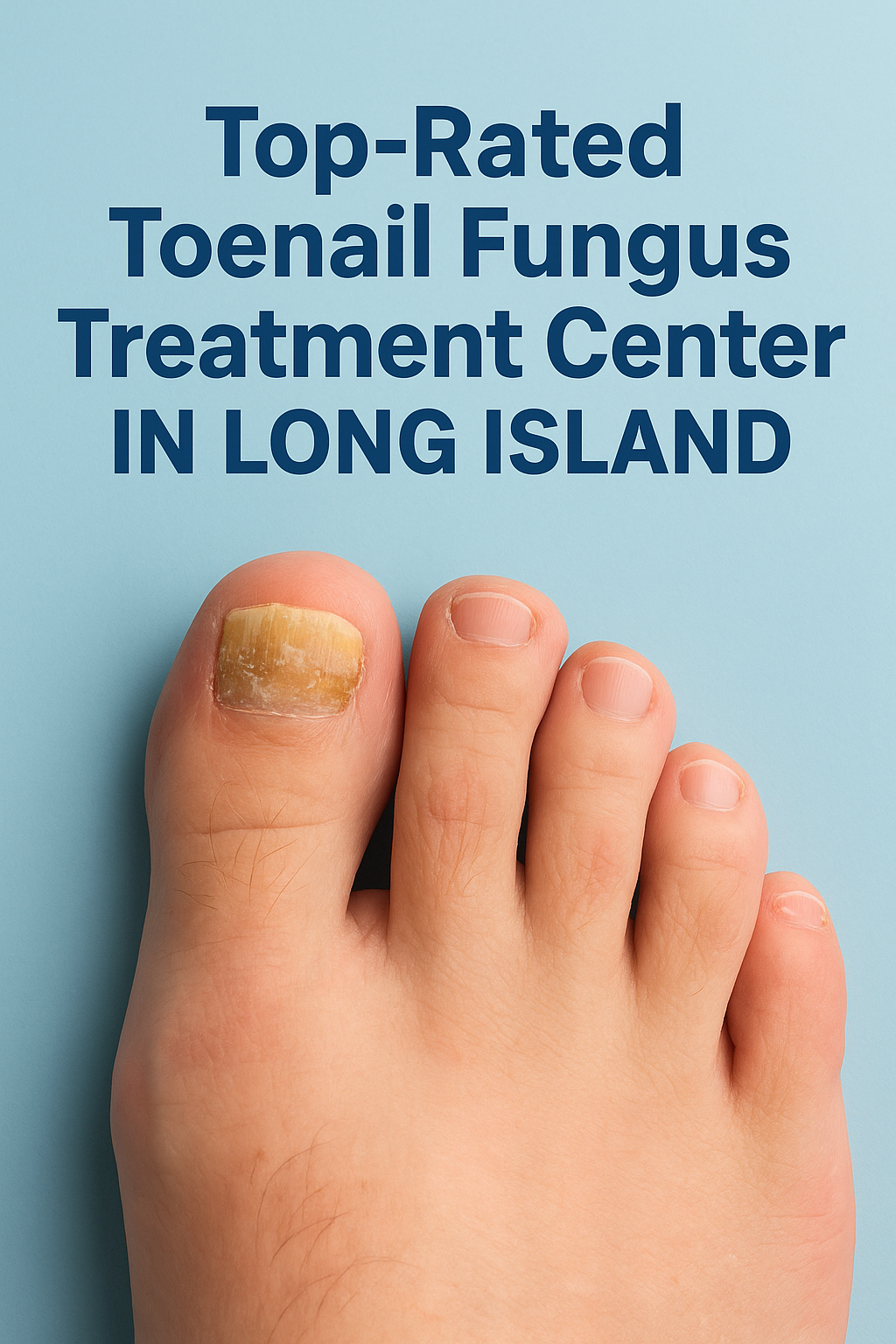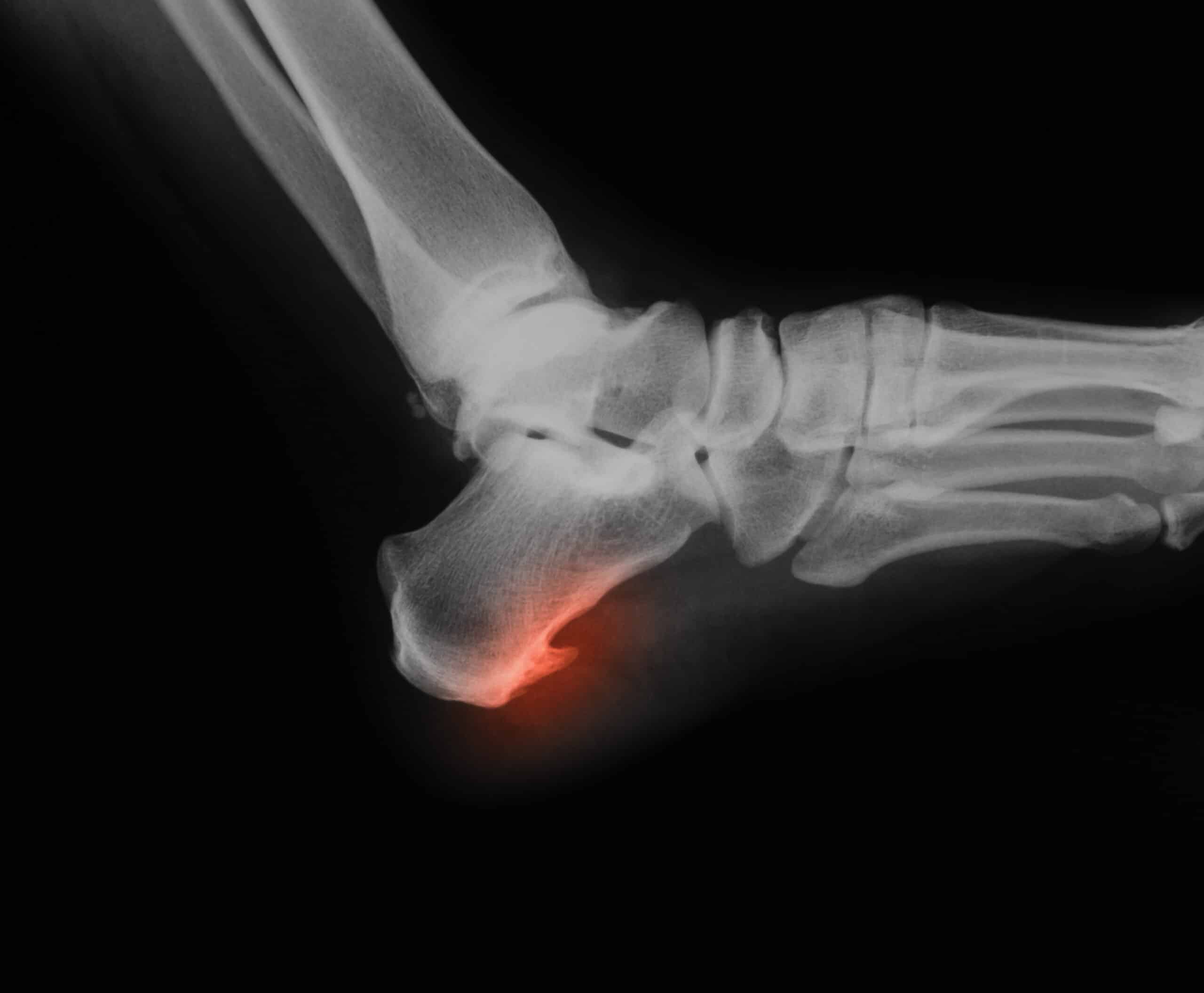

Research shows that heel spurs are more common than most people realize. In one large X-ray study of over 1,000 patients, 38% were found to have calcaneal spurs, with nearly a third occurring at two sites (plantar and Achilles) (Banadda et al., Clin Anat., 1992). Other studies report lower rates, around 11–12% in the general adult population (Menz et al., J Orthop Sports Phys Ther., 2008), while certain older populations show much higher prevalence—over 50% in seniors (Kullar et al., Int J Morphol., 2022).
A heel spur—also called a calcaneal spur—is a bony growth that develops on the underside of the heel bone (calcaneus). This hard calcium deposit can extend toward the arch of the foot and grow up to half an inch in length. Heel spurs may form at the back of the heel, along the plantar surface, or near the Achilles tendon, causing pain and discomfort with every step.
While heel spurs are commonly linked with plantar fasciitis, they are not the same condition. Plantar fasciitis involves inflammation of the thick band of tissue along the bottom of the foot, whereas a heel spur is an actual bone growth. However, the two are closely related—long-term plantar fasciitis can increase the risk of developing a heel spur, and both conditions often appear together in patients with chronic heel pain.
Plantar fasciitis occurs when the plantar fascia—a thick ligament running along the bottom of the foot from the heel bone to the toes—becomes inflamed. This condition often causes sharp, stabbing heel pain, especially with your first steps in the morning or after long periods of standing.
Heel spurs, on the other hand, are bony growths that can form on the heel bone. While they have several possible causes, one of the most common is untreated or chronic plantar fasciitis. Repeated stress and strain on the heel can trigger the body to build extra bone tissue as protection, leading to the formation of a spur.
It’s important to note that plantar fasciitis does not always lead to heel spurs—with the right treatment, inflammation can heal and symptoms may resolve. However, once a heel spur develops, it is usually permanent and may only be removed through surgery.

Heel spurs develop when the ligaments and tendons in the foot experience repetitive stress and strain, often leading to calcium deposits that form a bony protrusion on the heel. Overstretching or repeated micro-tears in these tissues can trigger the body to create extra bone as a protective response, causing chronic heel pain over time.
Certain activities and lifestyle factors can increase your risk of developing heel spurs. Common causes include:
High-impact activities such as running, jogging, or jumping on hard surfaces
Gait abnormalities or uneven walking patterns
Flat feet or high arches, which place extra stress on the heel
Excess body weight, increasing pressure on the feet
Poorly fitted or worn-out shoes, including frequent use of flip-flops
Untreated bruising or injuries to the heel
Medical conditions like plantar fasciitis, arthritis, and diabetes
Understanding the causes of heel spurs is the first step in preventing them and managing heel pain effectively. Early intervention and proper footwear can reduce your risk and keep you moving comfortably.
Heel spurs often cause heel pain, which may be intermittent or persistent, especially when walking, running, or standing for long periods. The pain typically results from the spur pressing against surrounding soft tissues, leading to inflammation and discomfort. Common signs and symptoms include:
Inflammation of soft tissues around the heel
Swelling near the front or underside of the heel
Difficulty walking or limited mobility due to discomfort
Not everyone with a heel spur experiences symptoms. Some spurs grow at angles that do not irritate nearby tissues, leaving the condition completely asymptomatic. In such cases, the presence of a heel spur is often discovered incidentally during an X-ray or imaging study performed for another reason.
At Restore Podiatry & Laser Center, our Long Island foot specialists provide expert evaluation for patients experiencing chronic heel pain, which can result from a variety of conditions. Accurate diagnosis is essential to distinguish a heel spur (calcaneal spur) from other foot disorders and develop an effective treatment plan.
Our diagnostic approach typically includes:
Comprehensive physical examination: assessing tenderness along the plantar fascia and heel area
Detailed medical history review: identifying risk factors, previous injuries, or chronic conditions contributing to heel pain
Radiologic imaging: X-rays or other imaging tests to confirm the presence of a heel spur and evaluate its size and location
Once your heel spur is confirmed, our specialists at Restore Podiatry & Laser Center create a personalized treatment plan tailored to your specific symptoms, activity level, and overall foot health. Early diagnosis and intervention can reduce pain, improve mobility, and prevent further complications.
At Restore Podiatry & Laser Center, we understand that heel pain can significantly impact your daily life. Our New York podiatrists specialize in diagnosing and treating heel spurs and plantar fasciitis using a combination of conservative, non-surgical therapies tailored to your specific needs. Early intervention is key to preventing long-term discomfort and complications.
Depending on the severity of your condition, your treatment plan may include:
Shockwave Therapy: Extracorporeal Shock Wave Therapy (ESWT) has been shown to effectively reduce pain and improve function in patients with chronic plantar fasciitis. A meta-analysis concluded that ESWT significantly alleviates heel pain and enhances quality of life .BioMed Central
Laser Therapy: Low-Level Laser Therapy (LLLT) is a non-invasive treatment that can reduce inflammation and promote healing in the affected tissues. Studies indicate that LLLT provides significant short-term pain relief and improves function in individuals with plantar fasciitis .PubMed Central
Rest and Activity Modification: Limiting activities that exacerbate pain, such as running on hard surfaces, can help reduce stress on the heel and promote healing.
Icing: Applying cold packs to the heel can decrease inflammation and alleviate pain.
Stretching Exercises: Targeted stretches for the Achilles tendon and plantar fascia can improve flexibility and reduce strain on the heel.
Orthotic Inserts: Custom-made insoles can provide support, correct gait abnormalities, and alleviate pressure on the heel.
Footwear Recommendations: Wearing shoes with proper arch support and cushioning can help distribute weight evenly and reduce heel pain.
Typically, a structured treatment plan is followed for at least 6 weeks. If significant improvement is observed, the plan may be extended for up to 6 months or more. Regular follow-up appointments are essential to monitor progress and make necessary adjustments to the treatment plan.
Surgical intervention is rarely needed for heel spurs or plantar fasciitis. Most patients experience significant relief with conservative treatments with over 90% success rate. Surgery may be considered if symptoms persist despite comprehensive non-surgical management.
A heel spur may seem like a minor foot condition, but it can lead to significant pain and mobility issues if left untreated. If you are experiencing heel pain, don’t wait—schedule an appointment with the experts at Restore Podiatry & Laser Center. Our New York podiatrists specialize in diagnosing and treating heel spurs and plantar fasciitis, providing personalized care to help you get back on your feet comfortably.
Gerdesmeyer, L., Frey, C., Vester, J., et al. “Extracorporeal Shock Wave Therapy for the Treatment of Chronic Plantar Fasciitis: A Randomized Controlled Multicentre Trial.” Journal of Bone and Joint Surgery – British Volume, vol. 85-B, no. 5, 2003, pp. 695–700. https://pmc.ncbi.nlm.nih.gov/articles/PMC7006537/
Alayat, M. S. M., Atya, A. A., Ali, M. M., et al. “Effect of Low-Level Laser Therapy in the Management of Plantar Fasciitis: A Systematic Review and Meta-Analysis.” Lasers in Medical Science, vol. 33, 2018, pp. 157–166. https://pmc.ncbi.nlm.nih.gov/articles/PMC6370152/
American Podiatric Medical Association. “Heel Spurs and Plantar Fasciitis.” APMA Patient Education, 2023. https://www.apma.org/Patients/FootHealth.cfm
Radford, J. A., Landorf, K. B., Buchbinder, R., Cook, C. “Effectiveness of Extracorporeal Shock Wave Therapy for Plantar Heel Pain: A Systematic Review and Meta-Analysis.” BMC Musculoskeletal Disorders, vol. 10, 2009, p. 24. https://trialsjournal.biomedcentral.com/articles/10.1186/s13063-020-04510-z
Disclaimer: The content on this site is provided for informational purposes only and does not constitute medical advice. It is not a substitute for professional evaluation, diagnosis, or treatment. Always consult a qualified healthcare provider or physician with any questions or concerns regarding your health, symptoms, or medical conditions.
Have any questions or concerns? Our team at Restore Podiatry is here to help! Reach out to us anytime, and we’ll be happy to assist you with expert advice and personalized care.